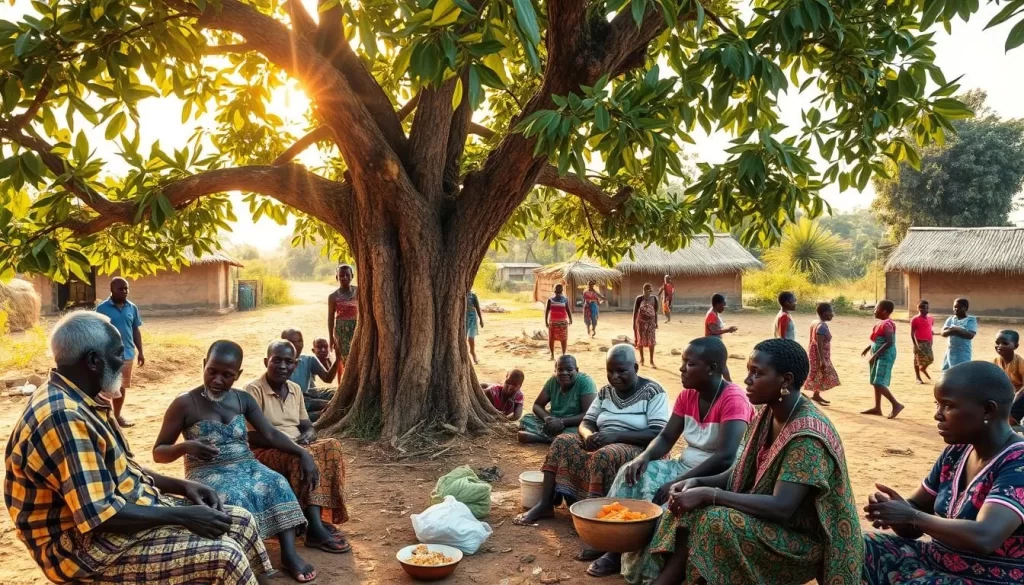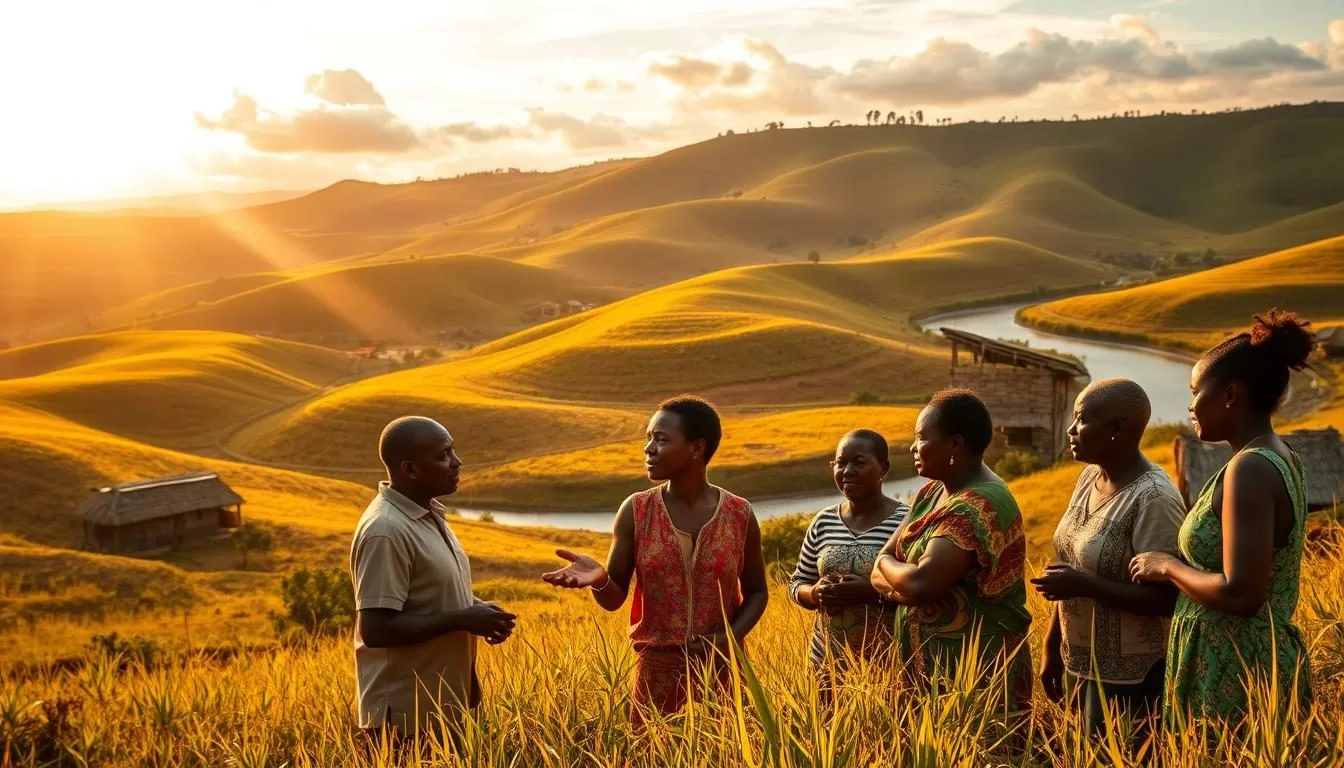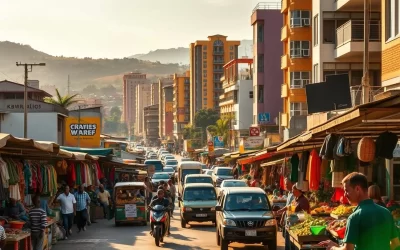✓ Accommodations✓ Flights✓ Rental Cars✓ Tours & Activities
Uganda is a country with a rich linguistic heritage. English serves as the official language, introduced during the colonial era, and is widely used in education, government, and media. This makes it a key part of daily life for many people. Luganda, on the other hand, is the most commonly spoken native language, especially in central regions like the capital city.
Swahili plays a significant role, particularly in the military and border areas. Although it hasn’t been ratified as the second official language, it remains a regional connector. The country is home to over 70 languages, showcasing its incredible diversity. These languages belong to multiple families, including Bantu, Nilotic, and Central Sudanic.
Ugandan Sign Language is also an important part of the linguistic landscape. It reflects the country’s commitment to inclusivity. Understanding this vibrant mix of languages helps you appreciate the cultural richness of this nation. Stay tuned as we explore more about its multilingual heritage in the next sections.
Exploring Uganda’s Linguistic Landscape
From Bantu to Nilotic, the language families here paint a vivid cultural picture. This nation’s linguistic diversity is a celebration of its heritage, with over 40 living languages embraced by various communities. Each language tells a story, reflecting the traditions and identity of its speakers.

Embracing Multilingual Heritage
Language is more than just a tool for communication—it’s a bridge that connects people. In this region, communities take pride in their native tongues, using them to preserve traditions and pass down knowledge. For example, Runyankore and Rutooro share similarities, showcasing how dialects evolve and influence one another.
Sign language also plays a vital role, highlighting the commitment to inclusivity. It ensures that every person, regardless of ability, can participate fully in society. This dynamic level of linguistic development strengthens cultural identity and fosters unity.
A Snapshot of Diverse Language Families
The languages here are grouped into four primary families: Bantu, Nilotic, Central Sudanic, and Kuliak. Bantu languages, like Luganda and Lusoga, are widely spoken and exhibit mutual intelligibility. Nilotic languages, such as Karamajong and Acholi, dominate the northeastern regions, while Central Sudanic languages like Lugbara are prominent in the north.
This classification not only helps linguists but also offers insights into regional variations. For instance, the standardized version of Runyankore, Rutooro, and Rukiga, known as “Runyakitara,” was developed to enhance teaching and communication.
“Language is the roadmap of a culture. It tells you where its people come from and where they are going.”
Understanding these families and their dialects allows you to appreciate the richness of this linguistic landscape. It’s a testament to how language unites communities and preserves heritage.
Historical Roots and Language Policy in Uganda
The linguistic history of this nation is deeply tied to its colonial past. During the colonial era, missionary work and formal education introduced English, which later became the official language. This shift was not just about communication but also about governance and control.

The Role of Colonial Influence and Missionary Work
Missionaries played a key role in shaping the language spoken in this region. They established schools where English was the medium of instruction, paving the way for its dominance. This approach aimed to unify diverse communities under a single linguistic framework.
However, this also created tensions. Native languages like Luganda were seen as politically sensitive, leading to debates about their role in national unity. The colonial legacy left a complex linguistic landscape that continues to evolve today.
Evolution of Language Policy Post-Independence
After gaining independence, the country faced the challenge of balancing tradition with modernity. English remained the official language, but discussions arose about adopting a native language to foster national identity. Luganda and Swahili were strong contenders, each with its own regional significance.
In eastern Uganda, these debates had a profound impact. The language policy aimed to accommodate both local dialects and the need for a unifying national language. This effort reflects the ongoing struggle to preserve cultural heritage while embracing progress.
“Language is not just a means of communication; it’s a reflection of identity and history.”
Today, the linguistic level in this region is a testament to its rich history. From colonial influence to post-independence reforms, language policy continues to shape the way people connect and thrive.
| Period | Key Developments |
|---|---|
| Colonial Era | Introduction of English through missionary schools |
| Post-Independence | Debates over adopting native languages for national unity |
| Modern Day | Balancing local dialects with English for governance |
Uganda: Official and widely spoken languages
Language plays a pivotal role in shaping identity and unity in diverse communities. In this country, English serves as the official language, deeply rooted in education, governance, and business. Its historical dominance since 1962 has made it a unifying force across regions.

English as the Lingua Franca
English is the backbone of formal communication. It is the medium of instruction in schools, starting from the fifth year of primary education. This ensures that citizens are equipped with skills for global opportunities. Its widespread use reflects the country’s commitment to progress and modernization.
In 1972, only 21% of the population could hold a conversation in English. By 2002, literacy rates for young adults soared to 76.2%, showcasing its growing importance. Today, it remains a key tool for social mobility and economic advancement.
The Case for Swahili: A Regional Connector
Swahili, though not an official language, holds significant regional influence. It is taught as an optional subject and is widely used in border areas and the military. Its role as a connector with neighboring countries makes it invaluable for trade and diplomacy.
In 1972, approximately 35% of the population spoke Swahili fluently. Despite its growing importance, it has yet to be ratified as a second official language. Its presence on currency notes and in courts highlights its cultural significance.
| Language | Role |
|---|---|
| English | Official language, education, governance |
| Swahili | Regional connector, military, trade |
Both English and Swahili play vital roles in daily life. While English dominates formal sectors, Swahili bridges cultural and regional gaps. This balance ensures that the country remains connected both locally and globally.
Native Languages and Regional Dialects
Native languages in this area are a testament to its vibrant heritage. They form the core of cultural identity, connecting people to their roots. From Luganda to lesser-known dialects, each language tells a story of tradition and unity.
Luganda and Other Key Bantu Languages
Luganda dominates central regions, with over 5 million speakers. It’s a cornerstone of cultural expression and daily communication. Other Bantu languages, like Lusoga and Runyankore, share similarities, creating a sense of mutual intelligibility among speakers.
These languages are part of a larger family, reflecting regional ties. For example, Lusoga has over 3 million speakers, making it one of the top five languages in the country.
Navigating Nilotic, Central Sudanic, and Kuliak Languages
Nilotic languages, such as Acholi and Karamojong, thrive in the north. Acholi alone has over 1.17 million speakers, showcasing its regional significance. Central Sudanic languages like Lugbara add another layer of diversity, with 200,000 speakers in the northwest.
Kuliak languages, though less common, are equally important. They highlight the intricate level of linguistic variation found here. Each language spoken enriches the cultural fabric of its community.
Insights into Dialect Continua and Variations
Dialect continua reveal how languages evolve and influence one another. For instance, Runyankore and Rukiga share many features, making them mutually intelligible. This phenomenon strengthens cultural bonds and fosters unity.
Sign language also plays a vital role, ensuring inclusivity for all. It’s a reminder of the commitment to equitable communication. Together, these languages and dialects create a dynamic linguistic landscape.
| Language Family | Key Languages | Speakers (Approx.) |
|---|---|---|
| Bantu | Luganda, Lusoga, Runyankore | Over 10 million |
| Nilotic | Acholi, Karamojong | Over 1.5 million |
| Central Sudanic | Lugbara | 200,000 |
Understanding this linguistic diversity helps you appreciate the richness of cultural traditions. It’s a journey through history, identity, and unity.
The Impact of Swahili and Local Dialects on Community and Culture
Swahili and local dialects are shaping the cultural and social fabric of communities. These languages play a crucial role in connecting people, preserving traditions, and fostering unity. From education to daily interactions, their influence is undeniable.

Swahili’s Growing Role in Education and the Military
Swahili is increasingly integrated into institutional education and military practices. It serves as a regional connector, bridging gaps between diverse groups. In 2011, plans were announced to establish a Swahili language council to enhance its teaching.
In the military, Swahili is widely used for communication, especially in border areas. Its adoption reflects its practical value in fostering regional cooperation. This language is also taught as an optional subject in schools, preparing students for broader opportunities.
Local Dialects: Bridging Traditional Practices and Modern Usage
Local dialects remain vital in preserving cultural practices. They connect generations, ensuring traditions are passed down. At the same time, these dialects adapt to modern settings, blending old and new seamlessly.
For example, Luganda is widely spoken in urban centers, used in business, transport, and media. Its evolution highlights how dialects thrive in contemporary contexts. This adaptability strengthens cultural identity while embracing progress.
“Language is the roadmap of a culture. It tells you where its people come from and where they are going.”
At home, dialects are the heart of daily interactions. They create a sense of belonging and unity. Even sign practices, distinct from formal sign language, support communication in specific contexts, ensuring inclusivity.
This dynamic evolution of dialects underscores their importance in shaping the community. Whether in public announcements or cultural events, they reflect the vibrant heritage of the country.
Conclusion
The linguistic tapestry of this nation reflects its rich cultural identity and unity. The official language, English, coexists with native tongues, creating a vibrant language country. This blend shapes daily life, from formal education to informal conversations at home.
Historical language policies have evolved to balance tradition and modernity. English remains dominant in governance and education, while native dialects preserve cultural heritage. In eastern Uganda, this balance is particularly evident, showcasing regional diversity.
Sign language plays a crucial role in fostering inclusivity. It ensures every person can participate fully in society. Together, these elements highlight the importance of language in building a unified community.
Understanding this linguistic landscape offers insights into the nation’s identity. From family traditions to formal sectors, language connects people and preserves heritage. Explore more about this fascinating language country here.
The above is subject to change.
Check back often to TRAVEL.COM for the latest travel tips and deals.






